This Mini PC has an inbuilt power source that is composed of up of four Li-ion Cells connected in parallel to a power module board.
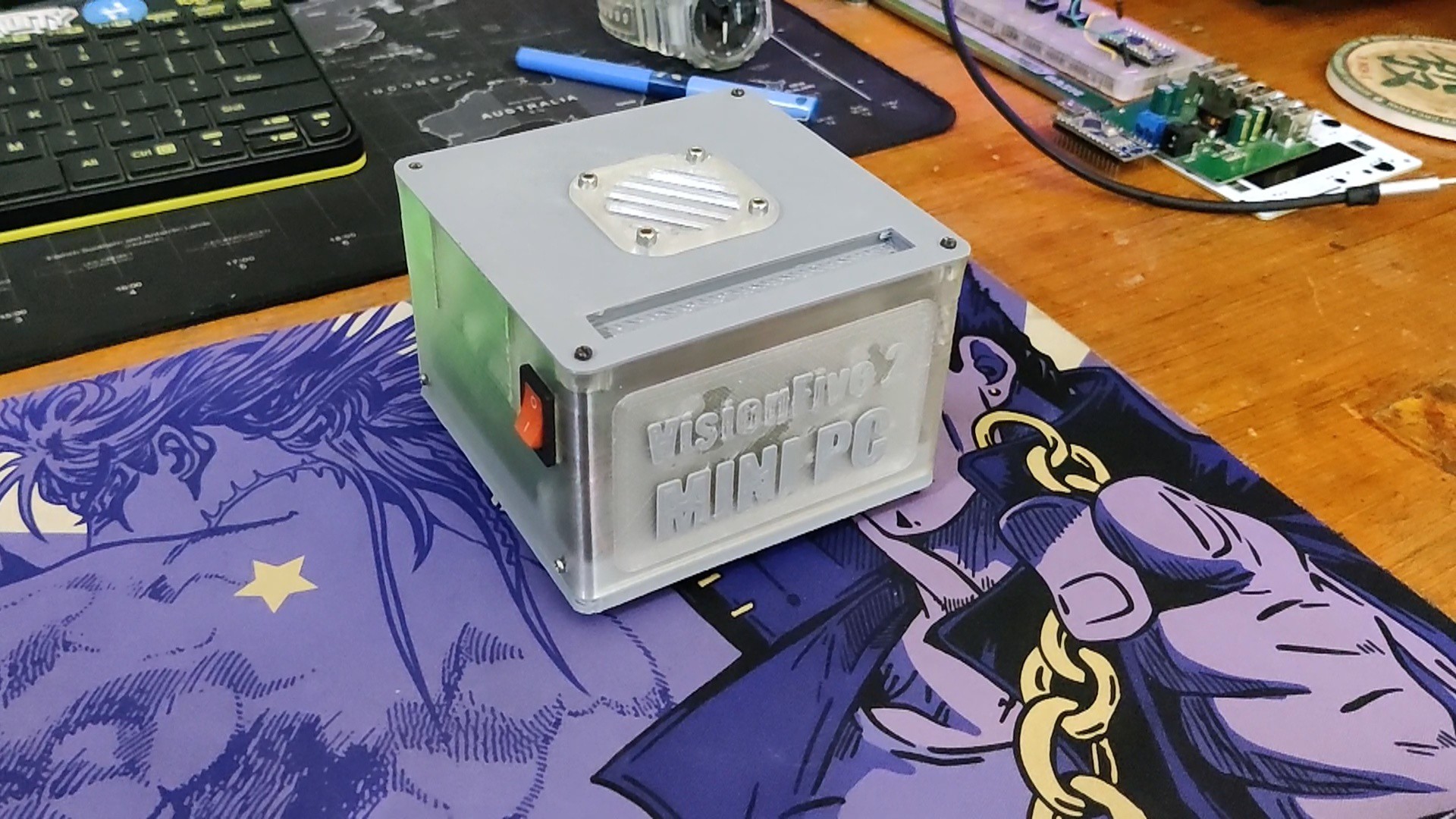
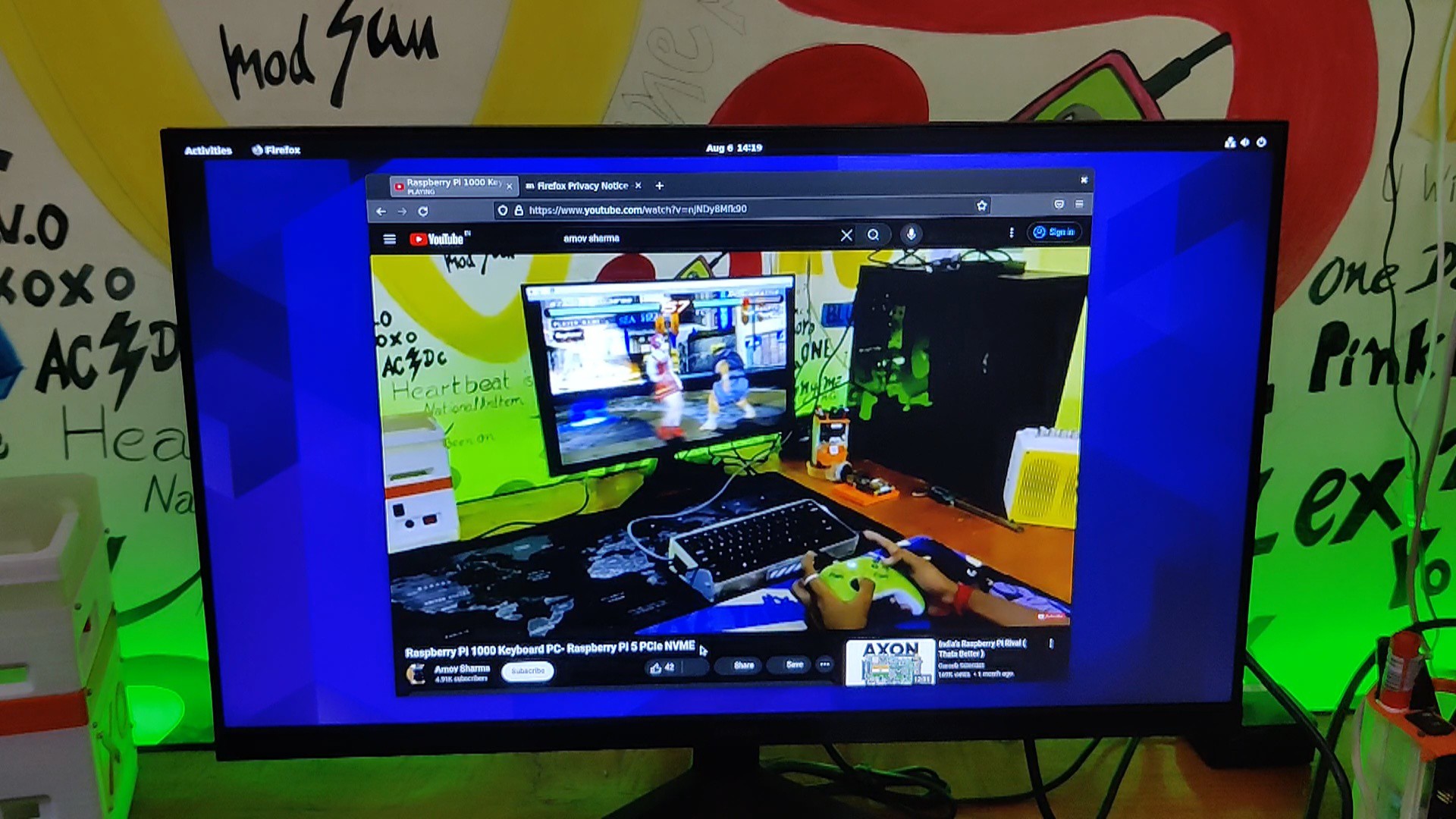
The intention was to create a small, NUC-like PC with integrated power and cooling, enabling us to conveniently power the SBC for testing and possibly even some retro emulation.
StarFive's VisionFive 2
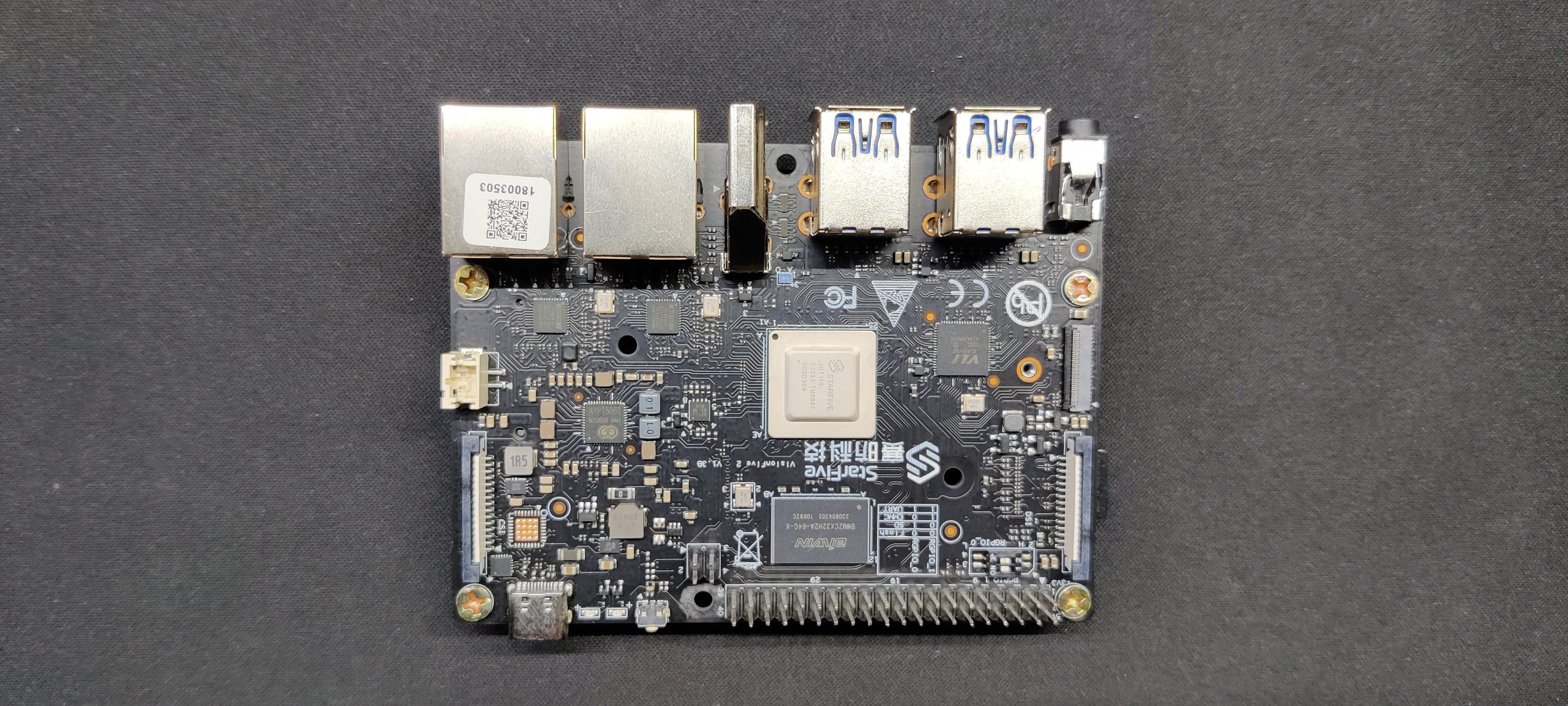
This is StarFive's VisionFive 2, an exciting new development in the SBC world's RISC-V category. The RISC-V architecture, which is entirely unique and distinct from ARM and X86, powers the VisionFive 2 SBC.
Here, this board packs the JH7110, a quad-core 64-bit SoC with RV64GC ISA, running up to 1.5 GHz, and integrated with IMG BXE-4-32 MC1, supporting OpenCL 3.0, OpenGL ES 3.2, and Vulkan 1.2.
VisionFive 2 is available with 2/4/8 GB LPDDR4 RAM options.
We are using the 8GB variant here.
Every peripheral I/O port, including an audio jack, Gigabit Ethernet, HDMI, and USB 3.0 connectors, is located on the front side.
The Type C power connector and Raspberry Pi-style GPIO header pins are located on the board's back, so we can even combine them with Thonny or terminal to create Python-driven electronics.
This board has an M.2 connector for Gen3x4 NVME SSDs, an eMMC socket that allows users to add an eMMC module to the board to enhance the amount of available storage, and a standard TF card slot.
They have also included a DIP switch that can be configured to run the operating system from three different sources: the TF Card, NVME, and eMMC.
Similar to the Raspberry Pi, this SBC also has standard MIPI-CSI and MIPI-DSI connectors for connecting displays and cameras.
As mentioned earlier, this board runs on a RISC-V chip, and what exactly is a RISC-V?
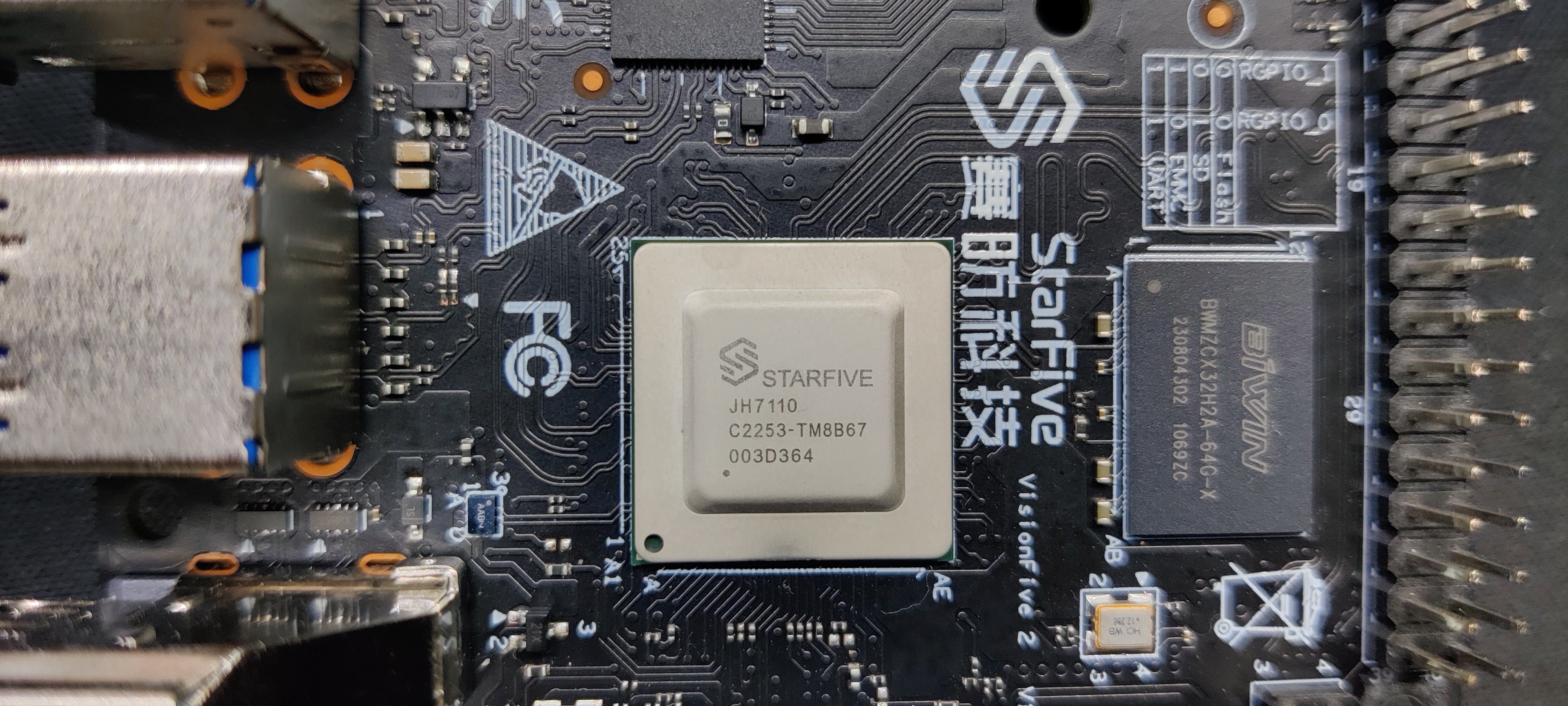
RISC-V is an open-source instruction set architecture (ISA) designed for creating custom processors for a wide range of applications. Initially developed at the University of California, Berkeley, RISC-V represents the fifth generation of processors based on the reduced instruction set computer (RISC) concept.
Put simply, RISC-V leverages simplified and condensed instruction sets, which contributes to the system's overall energy efficiency and increased speed above conventional processors. (While in theory quicker, RISC-V based boards are now extremely slow, barely beating the Raspberry Pi 3 and lacking in power compared to the Pi 4).
Fun fact: both ARM and RISC-V follow the reduced instruction set design philosophy. The key distinction between the two is RISC-V's openness and ARM's closedness; ARM uses a closed instruction set architecture (ISA) based on RISC that is licensed to businesses like Apple, for example, with their M Series processors. RISC-V is a relatively new architecture that is currently open source, suggesting that it may have potential in the future as more businesses should be able to build and modify it.
In terms of raw power, ARM currently leads, but we will have to wait and see.
It is evident that we will need some time to get things right, as our Starfive was having trouble with standard online browsing. Perhaps in the future, it will perform even better.
You can get more information about this SBC here:
https://www.starfivetech.com/en/site/boards
https://doc-en.rvspace.org/VisionFive2/Landing_Page/VisionFive_2/introduction.html
Benchmark Comparison

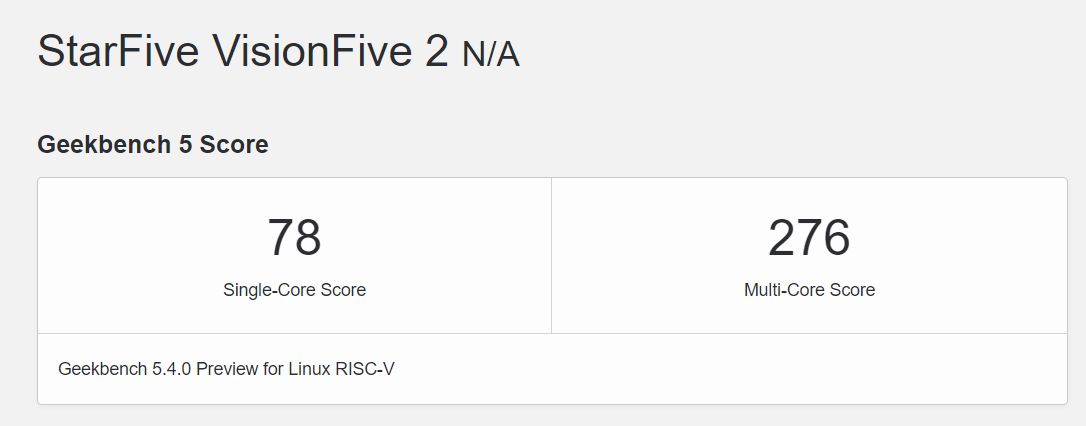

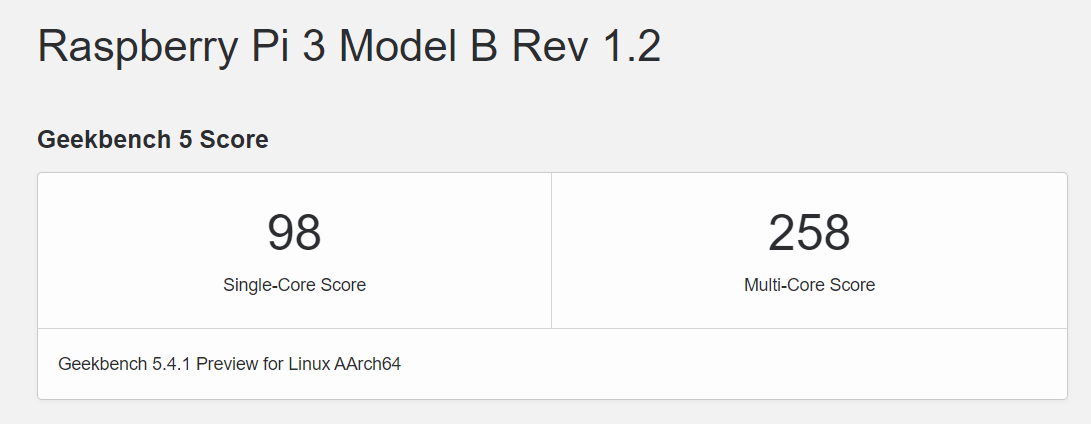
We have provided a benchmark score obtained from Geekbench 5, where we receive a multi-core score of 276 and a single-core score of only 78.
The Raspberry Pi 3B Plus, in contrast, has a multi-core score of 258, which is somewhat lower than Vision Five 2, but a single-core score of 98, which is higher.
The Raspberry Pi 4's single-core score is 256, while its multi-core score is 617. These numbers are significantly lower than what we achieved on the new Raspberry Pi 5 with the NVME hat, which scored 824 in the single-core test and 1836 in the multi-core test.
Design Process
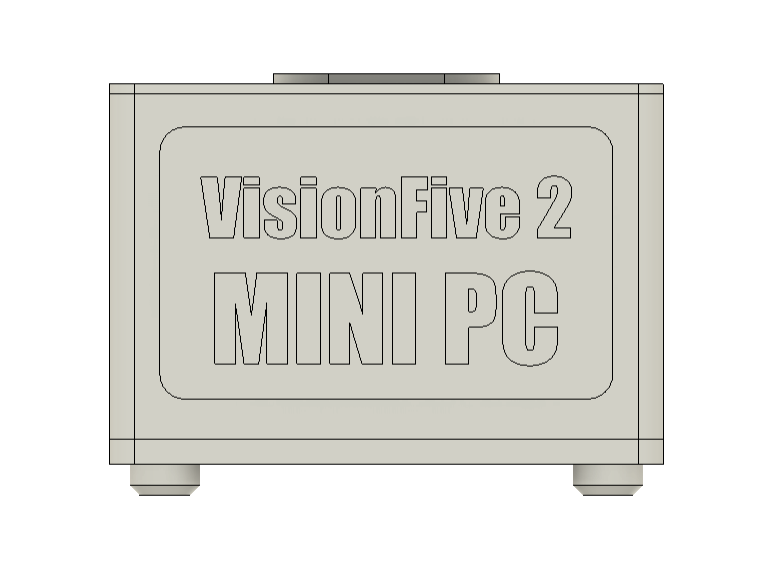
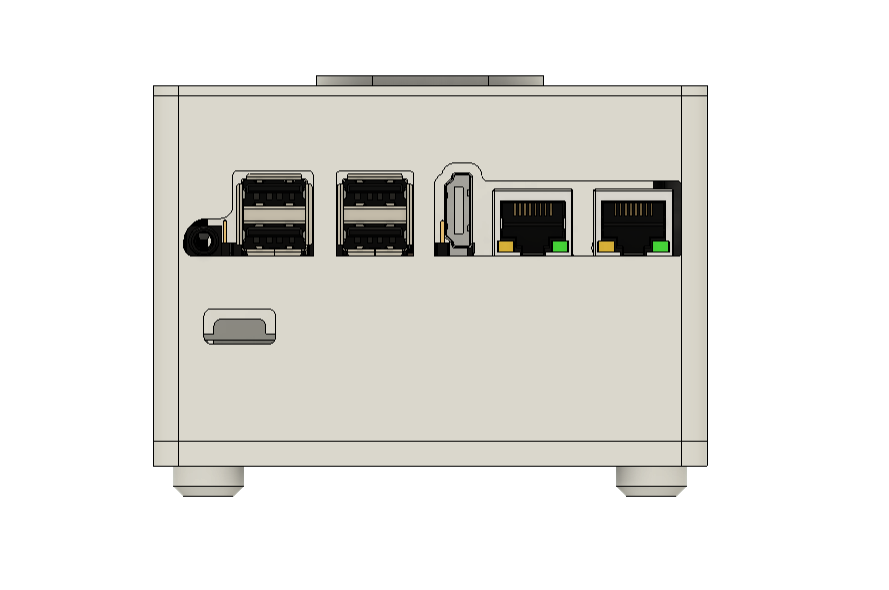
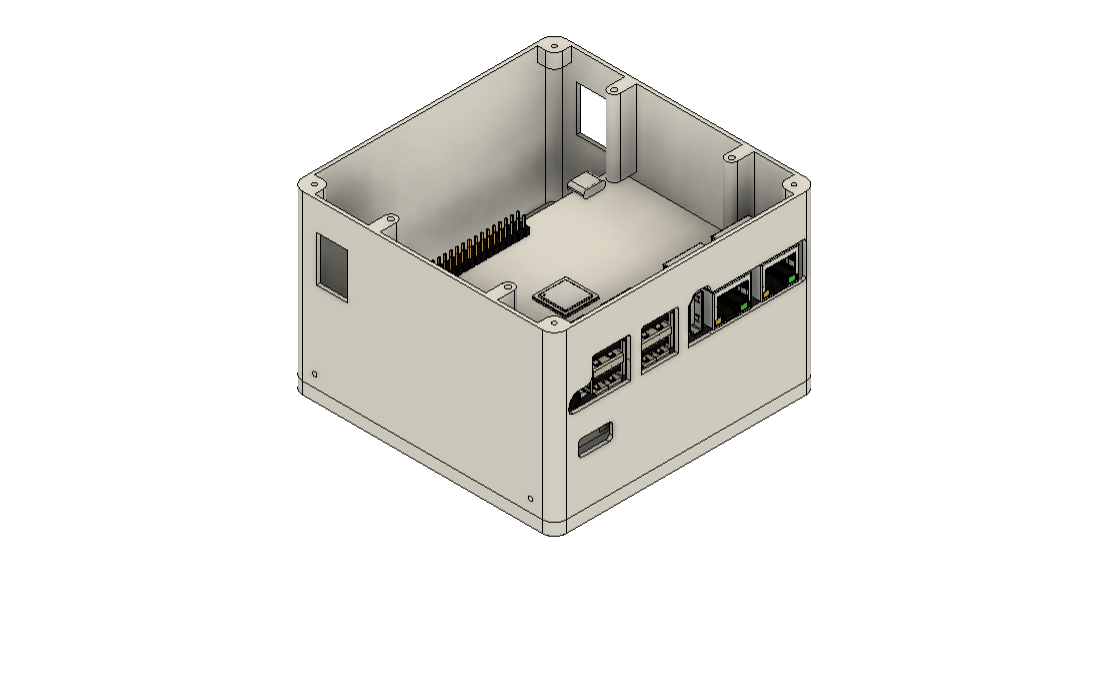
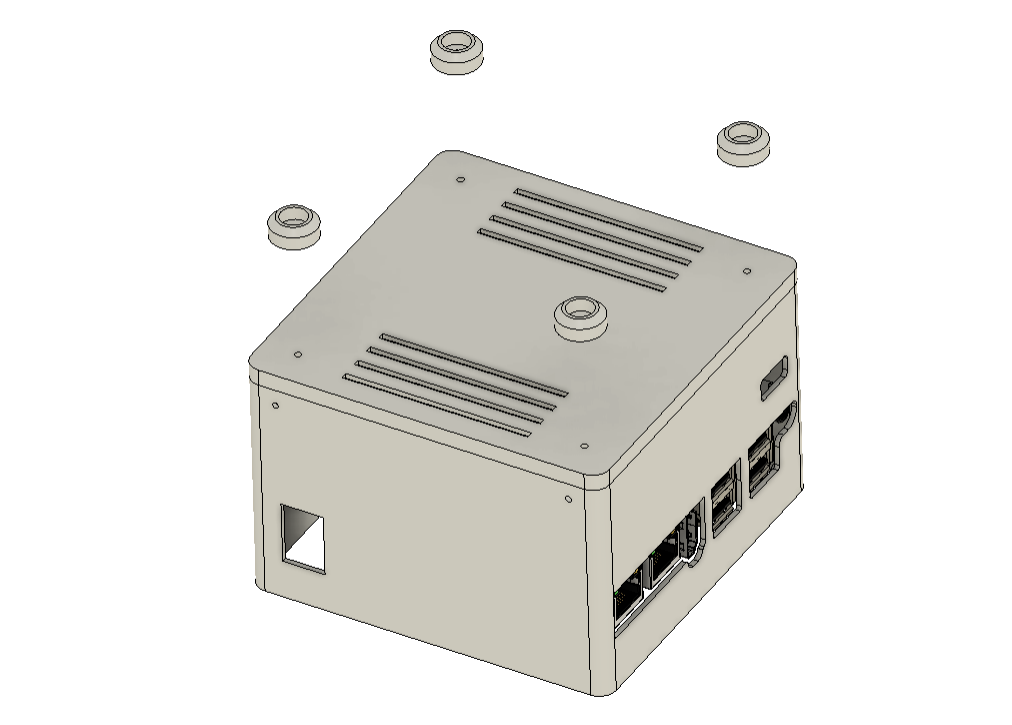
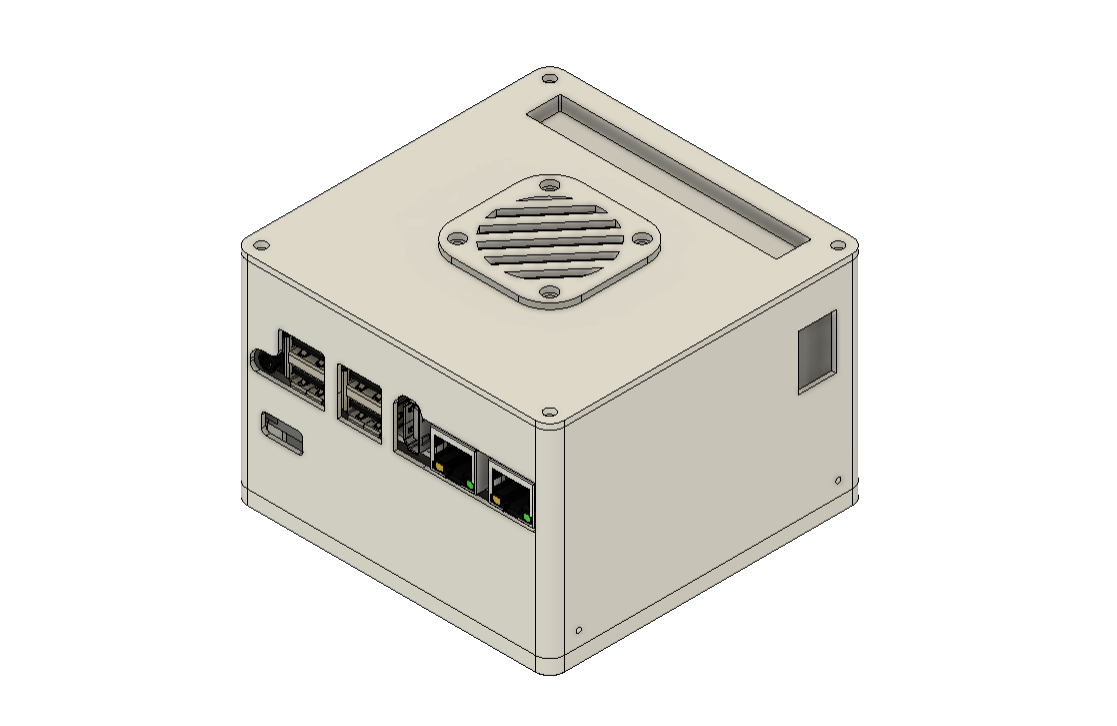
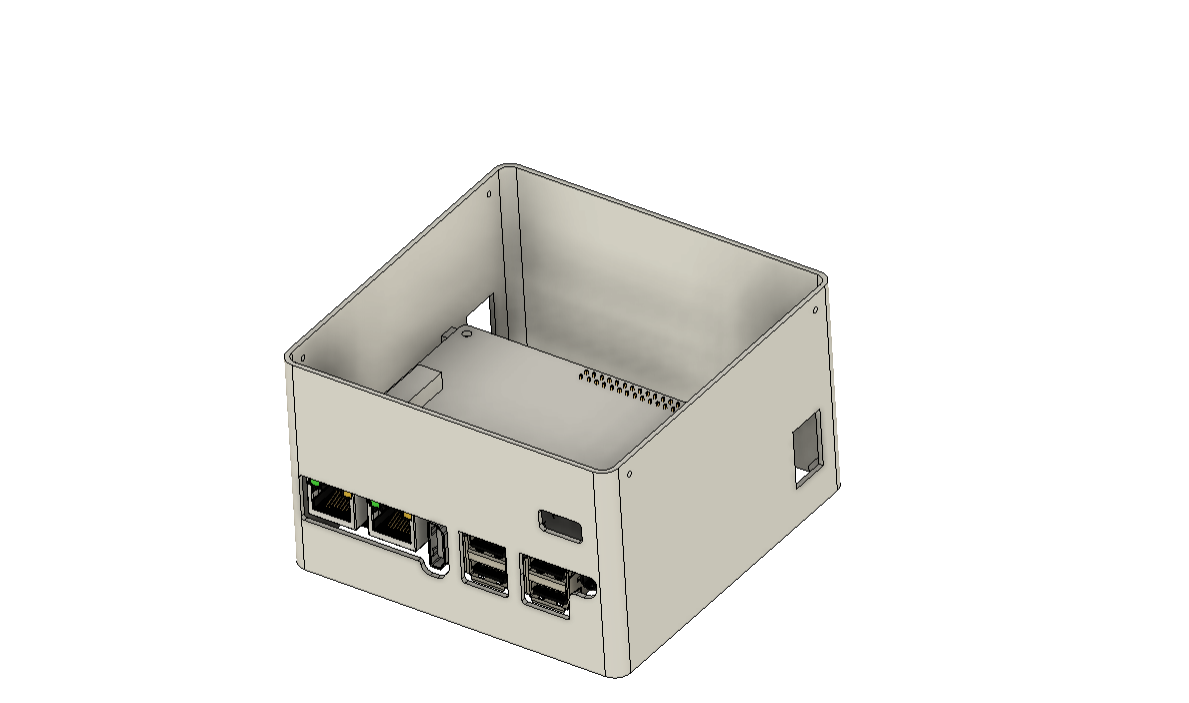
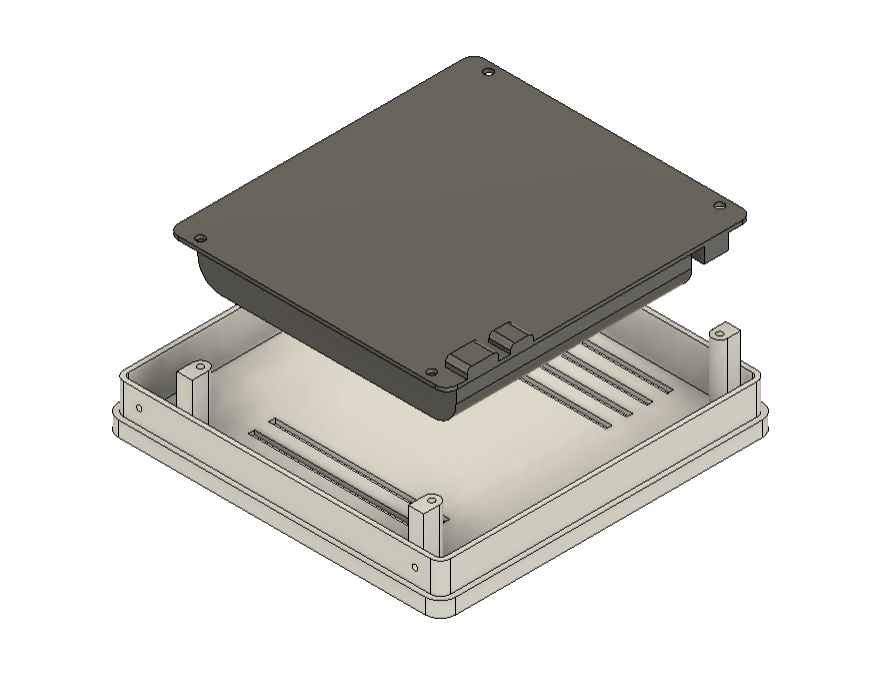
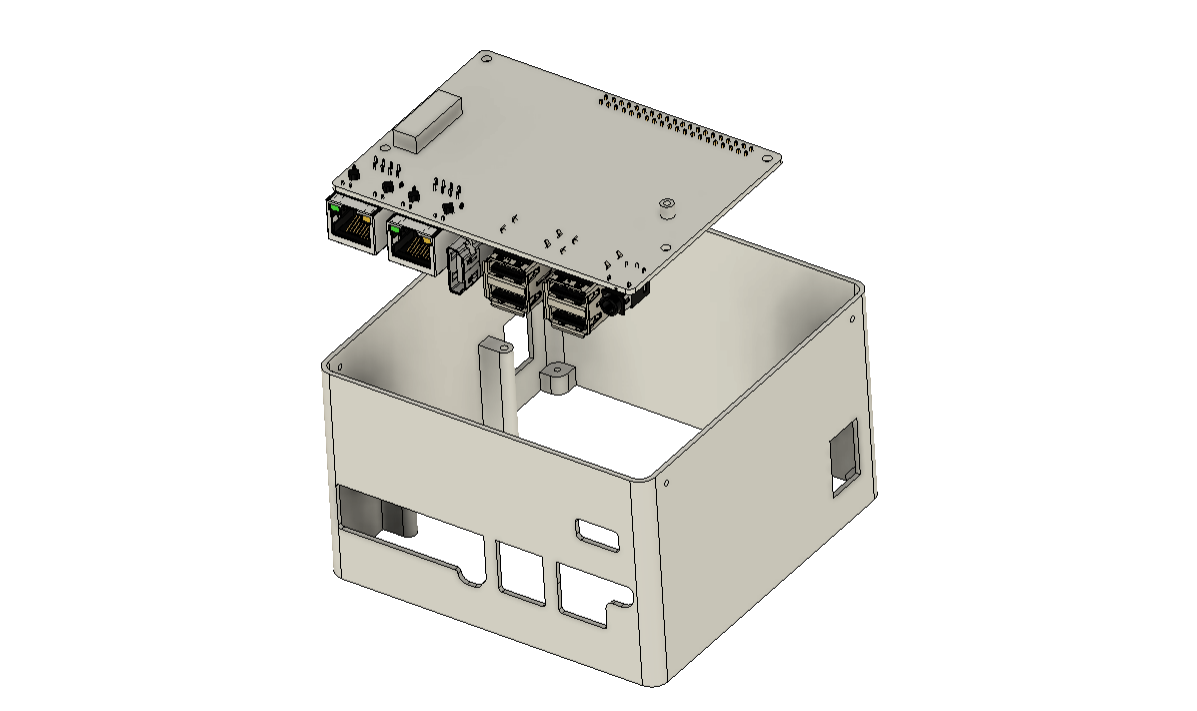
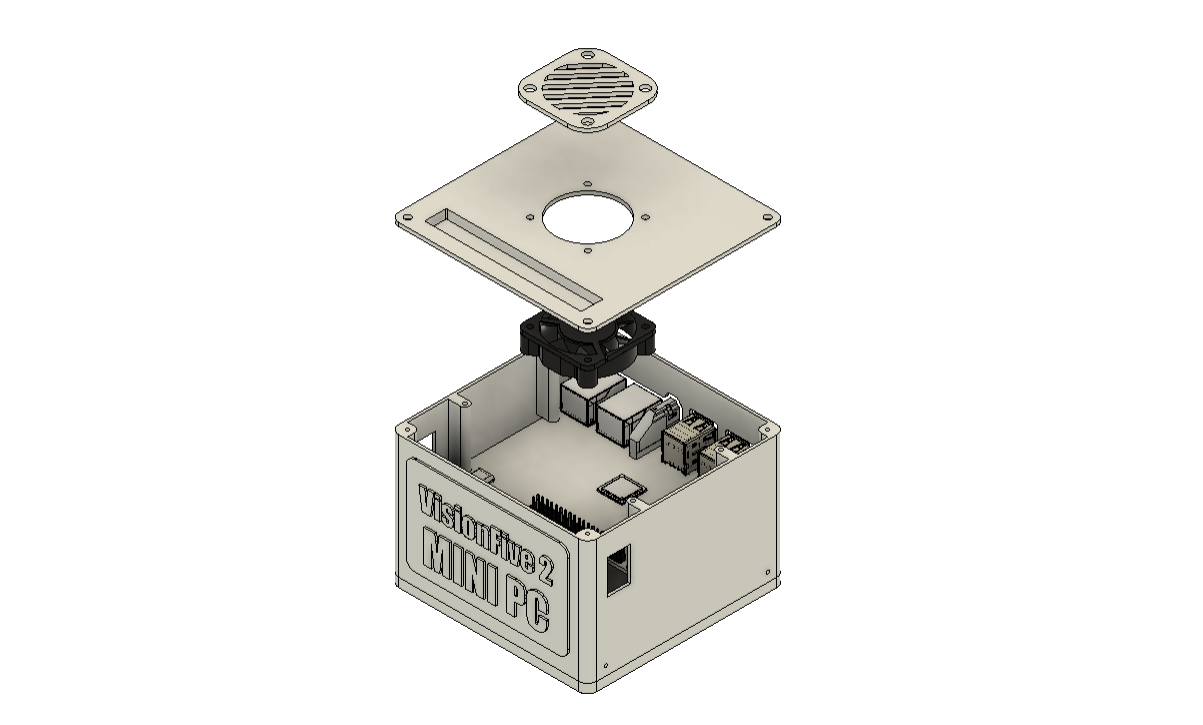
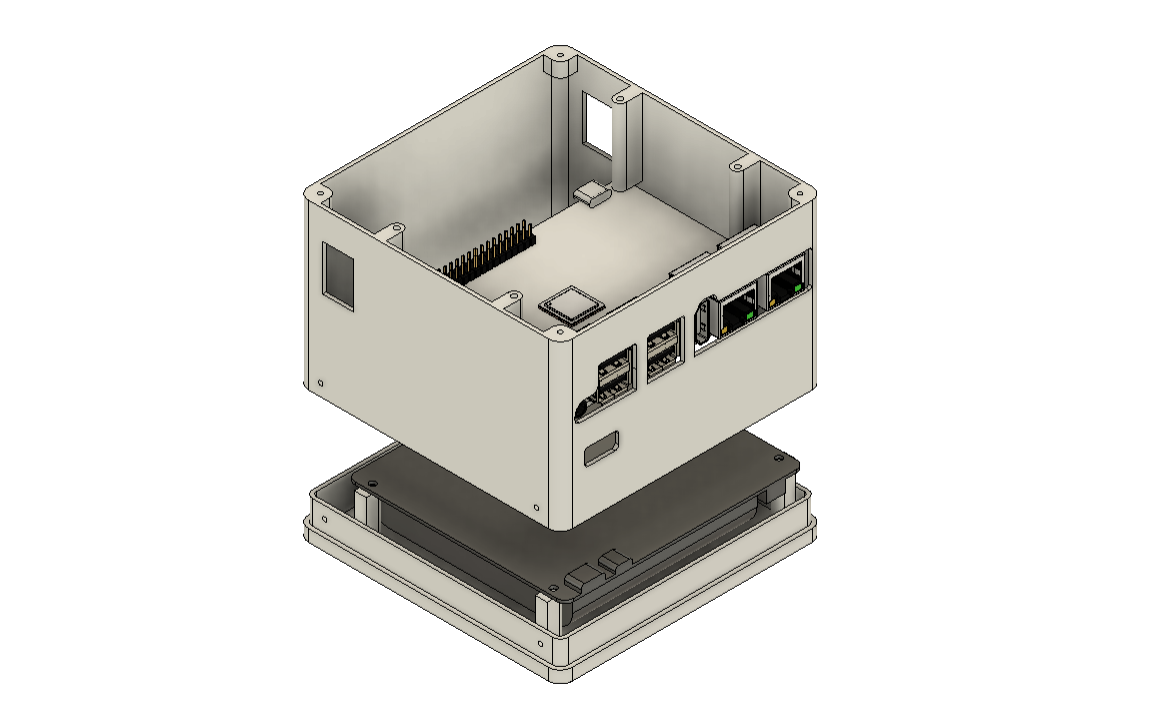
The Starfive Vision Five 2 board and the power module board were the first boards the model modeled. We measured both boards and created an exact 3D model that would be used to design the body.
This mini PC's enclosure is made up of three separate parts: the bottom lid part, which holds the power module in place, the Middle Section, which holds the start-five board in place and has two slots for placing the rocker switch, and the TOP Section, which contains the fan and grill assembly.
In addition, we have incorporated four foot parts that screw into the bottom lid section and raise the PC somewhat off the ground.
We have attached a nametag that says "RISC-V Mini PC" to the front face of the middle section. Two color filament will be utilized for making this part through the 3D printing process.
Once the model was finished, we exported each component and used Grey PLA and Transparent PLA to 3D print them using a 0.6mm Nozzle and 0.2mm layer height.
Power Module
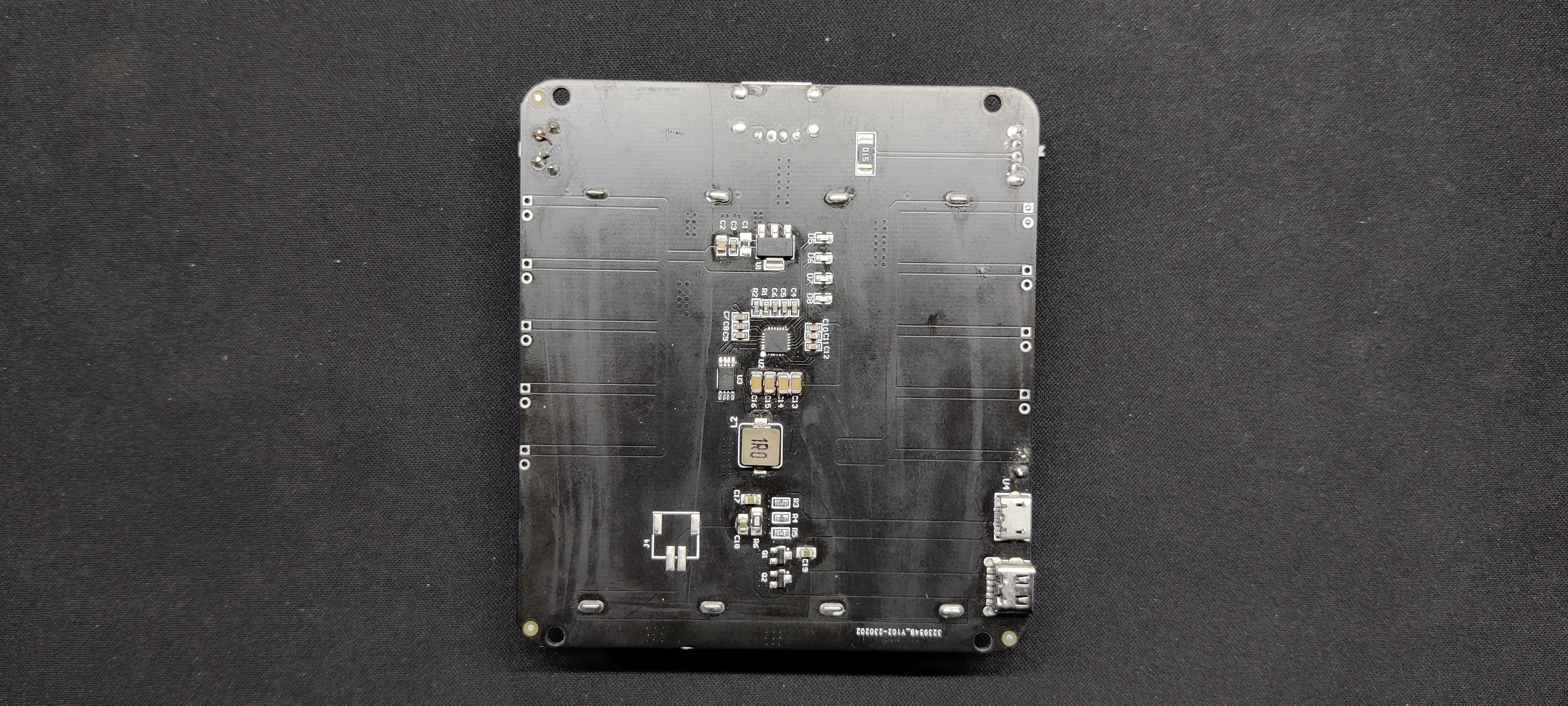
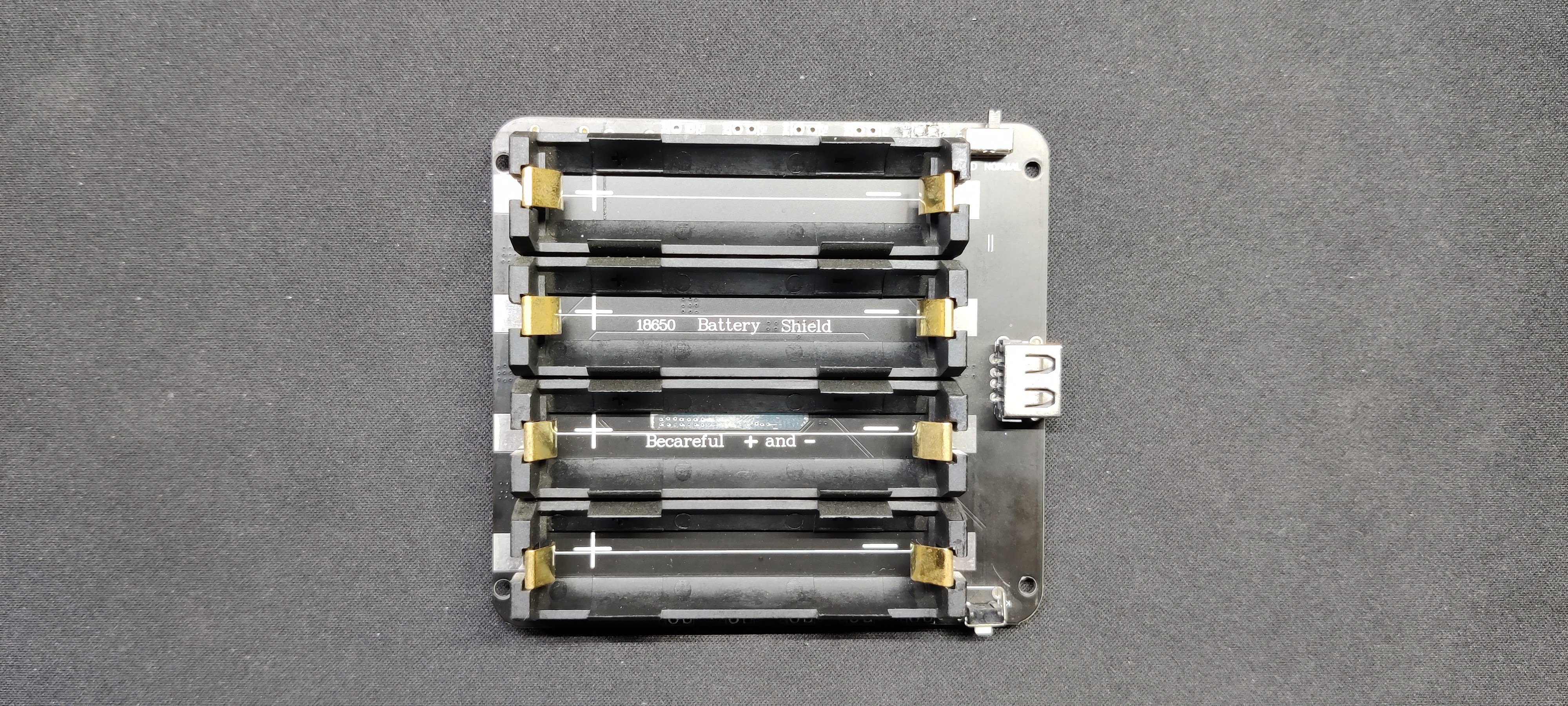
For powering the single-board computer, we are using this awesome power management board that we got from the PCBWAY gift shop.
This circuit is a Power Management Board that contains four lithium-ion cell holders, each connected in parallel with a Power management IC.
This board basically boosts 3.7 volts of Li-ion Cells to 5 volts for powering XYZ stuff through the USB Port or multiple CON2 Ports provided onboard.
We can get a wide range of outputs from this device, from 3.3V to 5V.
What makes it special?
- Battery protection (overcharge or over-discharge)
- Miniature USB port input
- Type a USB output.
- 0.5 A current charging.
- 1 switch controls USB output /5 ~ 8 V input voltage.
- Output of 3 V and 1 A and output of 5 V and 2 A.
- LED indication (green, red for charging)
- 3 V output port.
- The 5 V output port should be careful with "+" and "-", and the direction you should follow is "+" and "-" on the PCB.
PCBWAY Giftshop
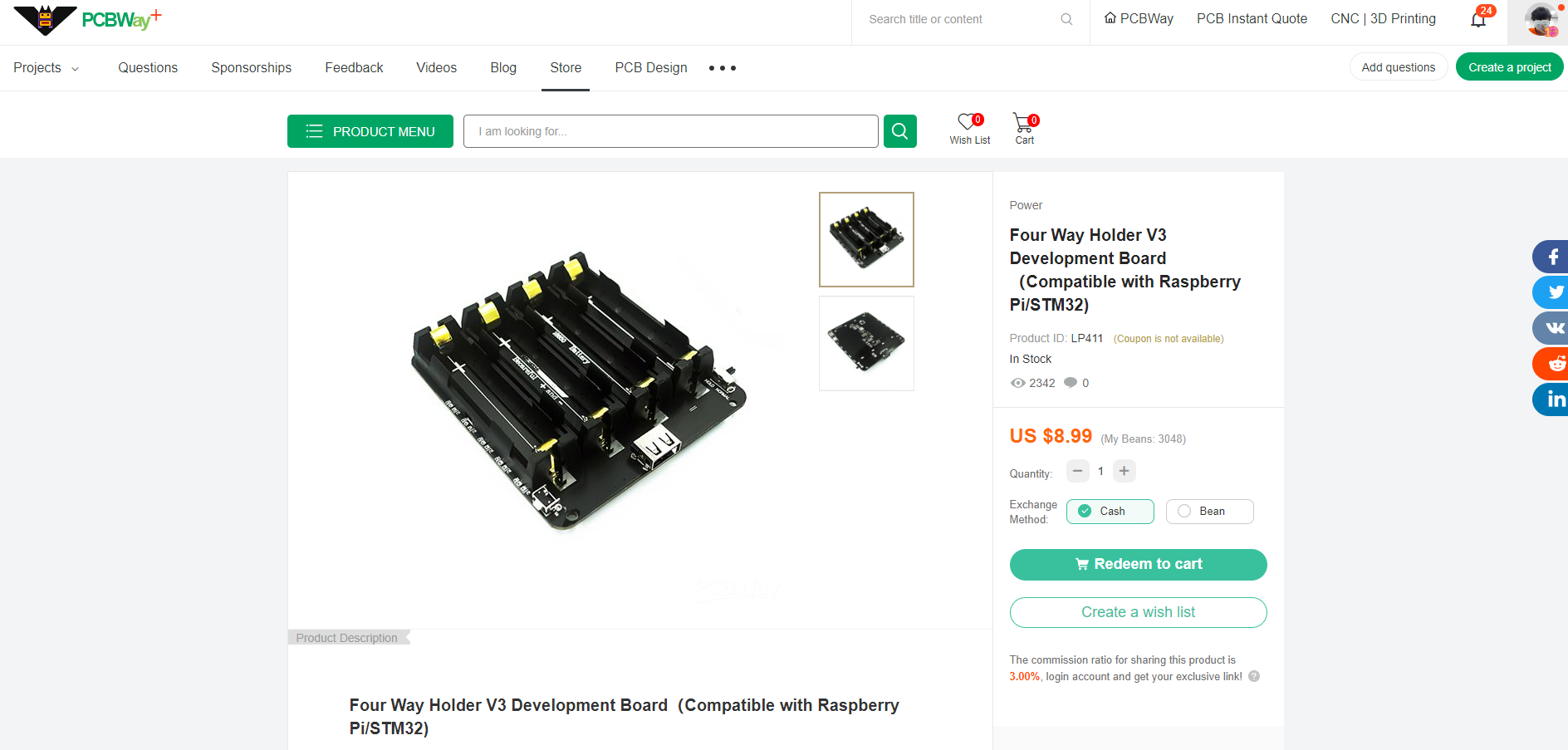
As for sourcing this component, I got this circuit from PCBWAY's Giftshop
PCBWAY gift shop is an online marketplace where you can get a variety of electronics modules and boards for their genuine price, or you could use the PCBWAY currency, which is called beans.
You get beans after ordering something from PCBWAY as reward points, or you can also get them by posting any project in the PCBWAY community.
They are presently celebrating their tenth anniversary in business by hosting a tour that includes a few activities in which you can take part and win some goodies, such as special coupons and the chance to open blind boxes filled with merchandise from their gift shop.
Over the past ten years, PCBWay has distinguished itself by providing outstanding PCB manufacturing and assembly services, becoming a trusted partner for countless engineers and designers worldwide.
Their commitment to quality and customer satisfaction has been unwavering, leading to significant growth and expansion.
You guys can check out PCBWAY if you want great PCB service at an affordable rate.
 Arnov Sharma
Arnov Sharma